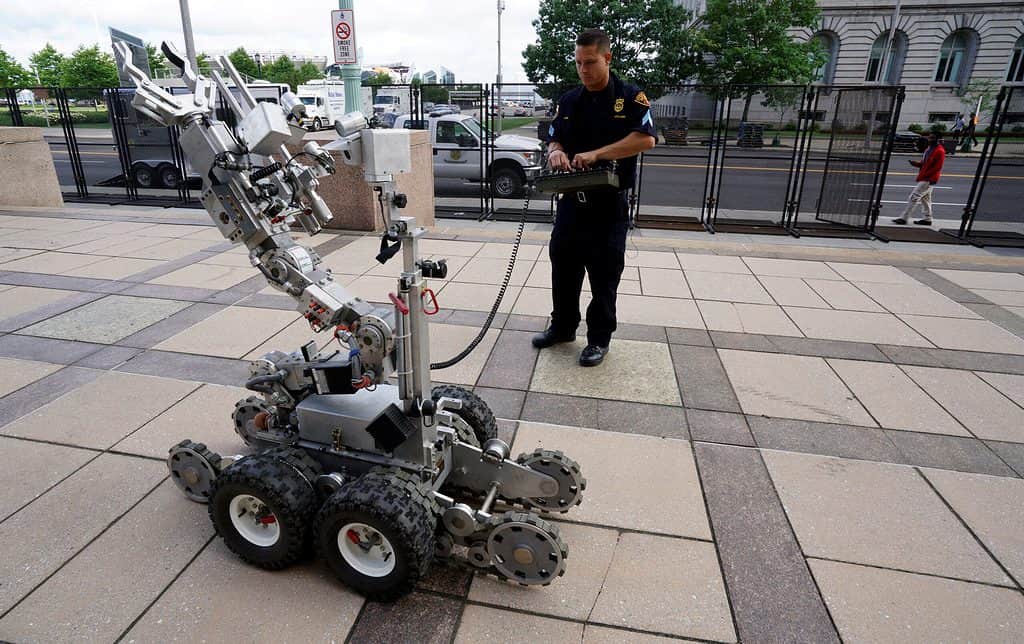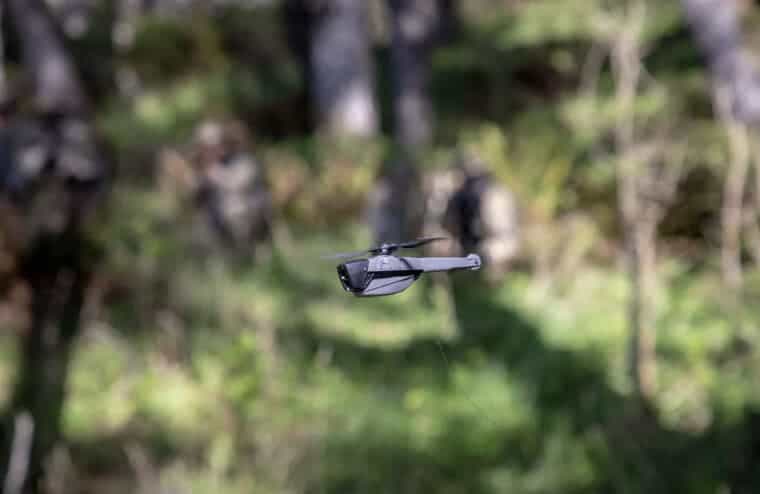
On Tuesday, San Francisco supervisors voted to give the city’s police the ability to use potentially lethal robots in certain emergency situations. These killer robots could be remote-controlled drones packed with explosives that can neutralize a threat after other alternatives for force or de-escalation tactics have failed.
After a heated debate, the decision to grant the police the authority to deploy lethal robots was made with an 8-3 majority. Civil liberty and police oversight groups opposed the proposal, criticizing the militarization of the police force, which is already thought to be armed to the teeth and overly aggressive, especially with certain minorities and marginalized socioeconomic communities.
The San Francisco Police Department (SFPD) spokesperson Allison Maxie said in a statement that killer police bots could only be used in exceptional cases when people’s lives are at stake“to contact, incapacitate, or disorient violent, armed, or dangerous suspect.”
Killer robots: necessary police tool in the 21st century or just overkill?
The SFPD currently has a couple of dozen ground robots meant to assess and disarm bombs remotely and flying drones that provide a tactical bird’s eye view even in poor visibility conditions. However, none of these robots are equipped with offensive or defensive capabilities for use as potentially deadly forces to actively take out ‘bad guys’.
Under the new rules, lethal robots are allowed only when there is no other option and innocent lives are at stake. Only a select few high-ranking officers are allowed to authorize the use of robots for a kill mission.
It’s not clear at all what robots we’re talking about. Some of the robots already in SFPD’s roster could be conceivably modified to integrate military-grade weapons, particularly grenades though it probably makes more sense to purchase robots that were originally designed for lethal roles.
The war in Ukraine has highlighted the role of kamikaze drones — which can be used for surveillance or flown into targets setting off explosive charges. Many of them are purpose-built for such missions by U.S. companies like AeroVironment, which manufactures the Switchblade. But even these are overkill — after all, San Francisco is no warzone, despite some people’s exaggerations.

A more suitable weapon system for close-quarter urban environments may be the microdrones like “Black Horner”, a spy plane that fits in your hand. The Black Hornet measures around 4 x 1 inch from tip to tail, with a 4-inch rotor span, and only weighs 16 grams, making it the smallest operational military micro-drone in the world. Adding a small amount of explosives could convert the system into a kamikaze drone that can also neutralize a threat.
There are many options and there is a precedence for the police to use robots for this purpose. The first time a robot has been used by the police with deadly force was in 2016 in Dallas, when a bomb-equipped robot killed Micah Johnson, a U.S. veteran who served in Afghanistan and had killed five white police officers in retribution for police killings of African-Americans.
Critics: another senseless militarization of U.S. police departments
The SFPD says it hasn’t received any military surplus robots, though some of its current robots have been purchased using federal grant money. However, this recent decision to allow lethal robots in the police force’s arsenal has proven quite shocking for the city’s residents.
For over a decade, police departments across the country have become increasingly militarized, inheriting military surplus equipment from the armed forces through a federal program. Many law enforcement and sheriff departments now have access to armored vehicles, camouflage uniforms, and even grenade launchers. Now, they’ll have killer drones. It’s understandable why some would feel uneasy, to say the least, especially among the Black community where there’s a longstanding sentiment that they are unlawfully discriminated against and targeted by the police.
“Police technology goes through mission creep–meaning equipment reserved only for specific or extreme circumstances ends up being used in increasingly everyday or casual ways,” warned the Electronic Frontier Foundation (EFF). “We’ve already seen this with military-grade predator drones flying over protests, and police buzzing by the window of an activist’s home with drones.”
“Killer robots will not make San Francisco safer,” tweeted the American Civil Liberties Union (ACLU) of Northern California. “Police kill Black and Brown people at epidemic rates, and remote triggers are easier to pull.”
As police officers become increasingly removed from using higher-powered weapons, policing increasingly begins to resemble warfare. However, normal police work is not combat, and arresting an individual is very different from what soldiers are expected to do in a warzone. While robots may have a role in protecting police from shooters with military-style weapons, everyday policing needs a human component to create trust between officers and the communities they try to protect. The loss of this connection may lead to currently unknown consequences, such as police officers who turn a suspect into a remote threat that needs eliminating with little oversight.
Earlier this week, the San Francisco Public Defender’s office warned that granting police “the ability to kill community members remotely” went against the city’s progressive values. A similar proposal was discussed across the bay last month in Oakland, but the use of killer bots by the police was rejected by the police department’s civilian oversight council.









